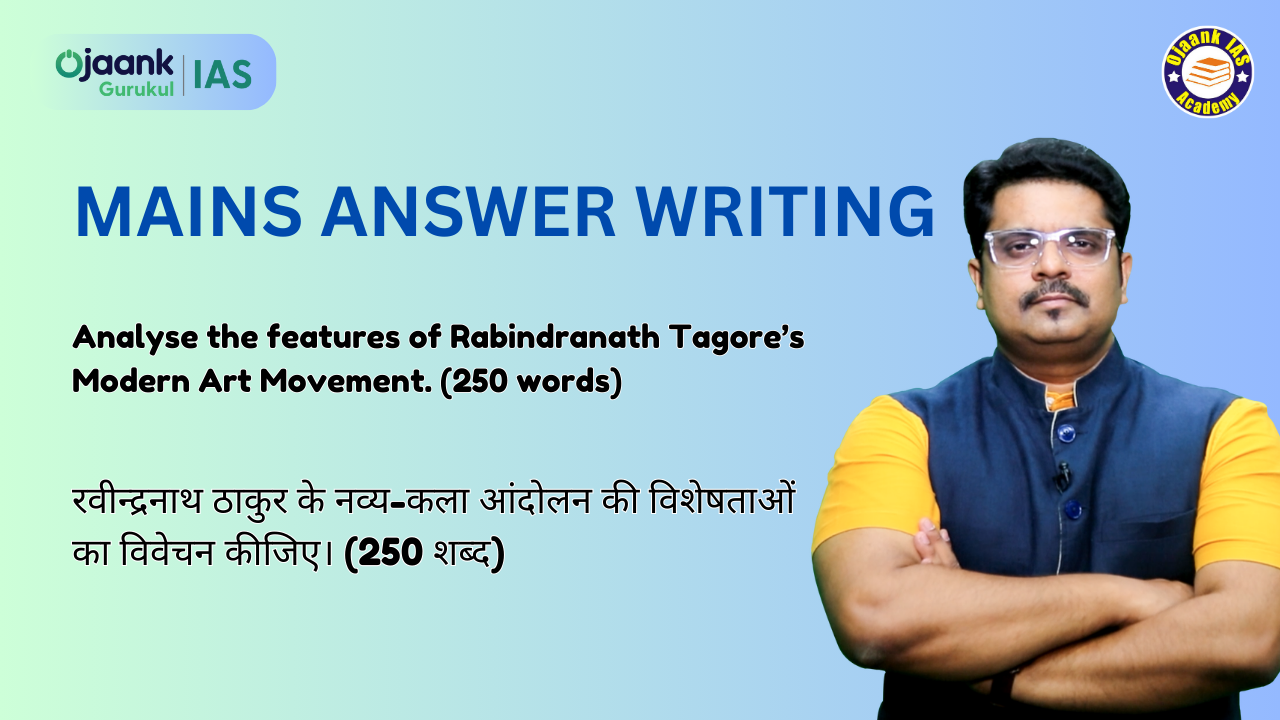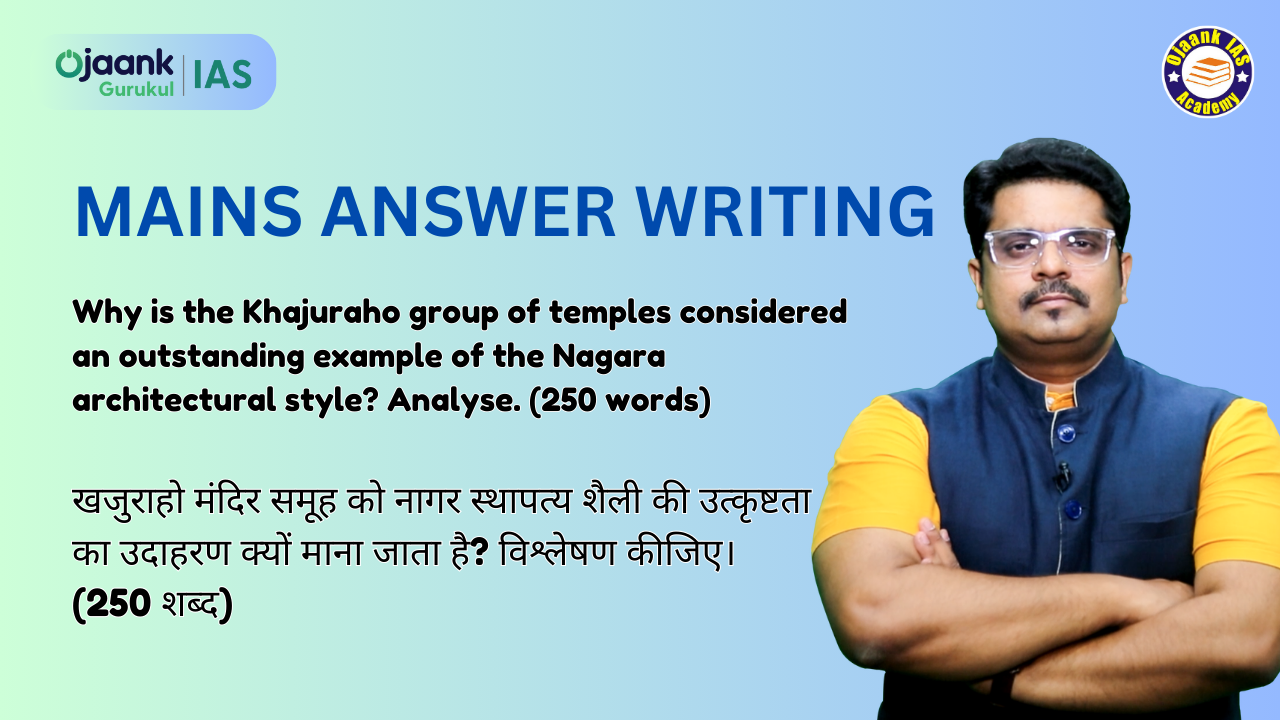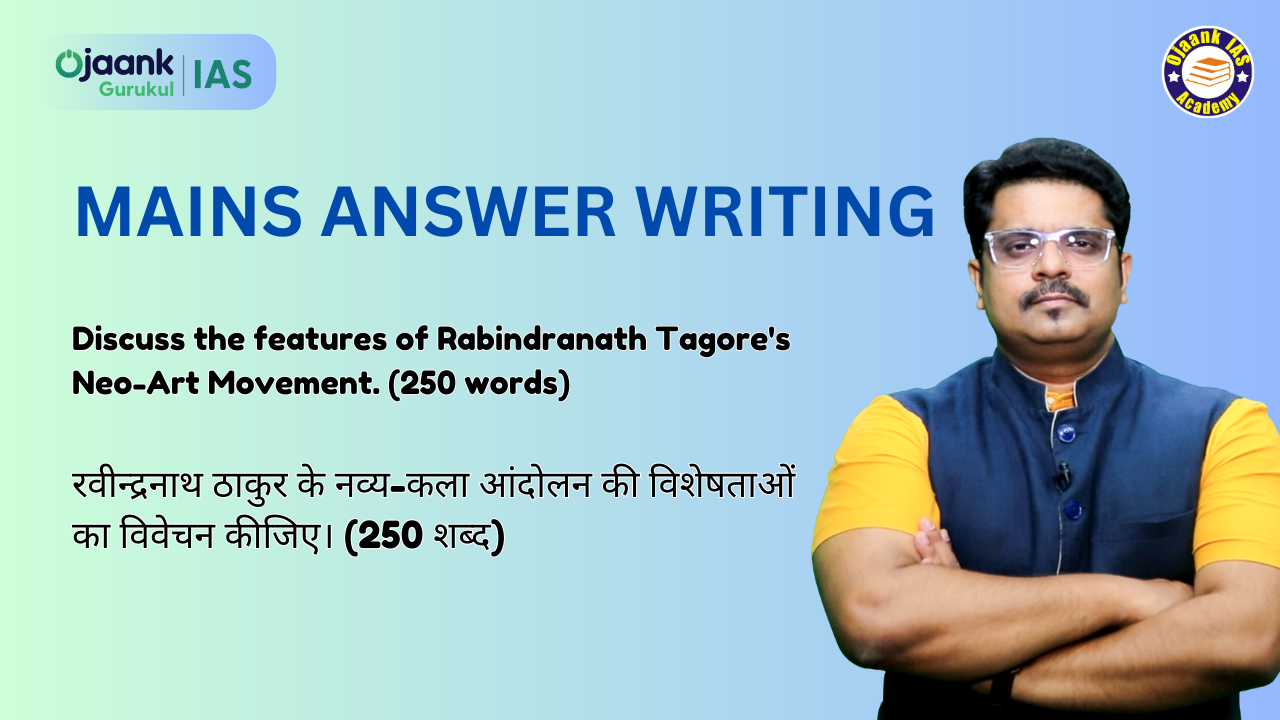Analyse the features of Rabindranath Tagore’s Modern Art Movement. (250 words)
29-04-2025

I. Origin and Background of the Movement:
Tagore's inclination towards painting increased in the later stage of his life (after the age of 60).
He considered art as the "language of the soul," which he believed was more powerful than words.
II. Key Features:
-
Use of Form and Colour: Wavy lines, deep shades, and indistinct figures.
-
Symbolism and Abstraction: His art deviated from traditional realism.
-
Psychological Depth: His artworks emerged from introspection and personal experiences.
-
Creative Freedom: He adopted an original approach instead of imitating Western techniques.
III. Criticism and Impact:
Tagore believed that "an artist should not become a slave to any rule or tradition."
He established Kala Bhavan in Santiniketan, providing an institutional foundation for the modern art movement.
Tagore’s art gained international recognition, notably at the Paris Exhibition in 1930.
IV. Conclusion:
Rabindranath Tagore’s modern art movement symbolized self-exploration, originality, and cultural self-rule (Swaraj). It provided a new direction to Indian modern art and redefined its aesthetic and philosophical dimensions.
Copyright 2022 power by Ojaank Ias
|






